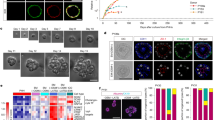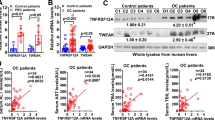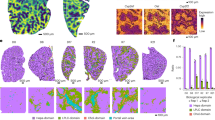Abstract
Hydrophobic bile acids may cause hepatocellular necrosis and apoptosis during cholestatic liver diseases. The mechanism for this injury may involve mitochondrial dysfunction and the generation of oxidant stress. The purpose of this study was to determine the relationship of oxidant stress and the mitochondrial membrane permeability transition (MMPT) in hepatocyte necrosis induced by bile acids. The MMPT was measured spectrophotometrically and morphologically in rat liver mitochondria exposed to glycochenodeoxycholic acid (GCDC). Freshly isolated rat hepatocytes were exposed to GCDC and hepatocellular necrosis was assessed by lactate dehydrogenase release, hydroperoxide generation by dichlorofluorescein fluorescence, and the MMPT in cells by JC1 and tetramethylrhodamine methylester fluorescence on flow cytometry. GCDC induced the MMPT in a dose- and Ca2+-dependent manner. Antioxidants significantly inhibited the GCDC-induced MMPT and the generation of hydroperoxides in isolated mitochondria. Other detergents failed to induce the MMPT and a calpain-like protease inhibitor had no effect on the GCDC-induced MMPT. In isolated rat hepatocytes, GCDC induced the MMPT, which was inhibited by antioxidants. Blocking the MMPT in hepatocytes reduced hepatocyte necrosis and oxidant stress caused by GCDC. Oxidant stress, and not detergent effects or the stimulation of calpain-like proteases, mediates the GCDC-induced MMPT in hepatocytes. We propose that reducing mitochondrial generation of reactive oxygen species or preventing increases in mitochondrial Ca2+ may protect the hepatocyte against bile acid-induced necrosis.
Similar content being viewed by others
Log in or create a free account to read this content
Gain free access to this article, as well as selected content from this journal and more on nature.com
or
Abbreviations
- Cbz-Leu-Leu-Tyr:
-
N-carbonylbenzyloxy-l-leucyl-l-leucyl-l-tyrosine, diazomethyl ketone
- CHAPS:
-
3-[(3-cholamidopropyl)dimethyl, ammonio]-1- propanesulfonate
- CMC:
-
critical micellar concentration
- GCDC:
-
glycochenodeoxycholic acid
- FACS:
-
fluorescence-activated cell sorter
- FCCP:
-
carbonyl cyanide p-trifluoromethoxyphenylhydrazone
- MMPT:
-
mitochondrial membrane permeability transition
- ROS:
-
reactive oxygen species
- TBARS:
-
thiobarbituric acid-reactive substances
- TFP:
-
trifluoperazine
- TMRM:
-
tetramethylrhodamine methylester
- Triton X-100:
-
t-octylphenoxypolyethoxyethanol
- Δψ:
-
mitochondrial electrochemical gradient
References
Greim H, Czygan P, Schaffner F, Popper H 1973 Determination of bile acids in needle biopsies of human liver. Biochem Med 8: 280–286
Attili F, Angelico M, Cantafora A, Alvaro D, Capocaccia L 1986 Bile acid-induced liver toxicity: relation to the hydophobic-hydrophilic balance of bile acids. Med Hypothesis 19: 57–69
Armstrong MJ, Carey MC 1982 The hydrophobic-hydrophilic balance of bile salts. Inverse correlation between reverse-phase high performance liquid chromatographic mobilities and micellar cholesterol-solubilizing capacities. J Lipid Res 23: 70–80
Spivey JR, Bronk SG, Gores GJ 1993 Glycochenodeoxycholate-induced lethal cell injury in rat hepatocytes. J Clin Invest 92: 17–24
Galle PR, Theilmann L, Raedsch R, Otto G, Stiehl A 1990 Ursodeoxycholate reduces hepatotoxicity of bile salts in primary human hepatocytes. Hepatology 12: 486–491
Sokol RJ, McKim JM, Goff MC, Devereaux MW, Ruyle SZ, Han D, Packer L, Everson G 1998 Vitamin E reduces oxidant injury to mitochondria and hepatotoxicity of intravenous taurochenodeoxycholic acid in the rat. Gastroenterology 114: 164–174
Patel T, Bronk SF, Gores GJ 1994 Increases of intracellular magnesium promote glycodeoxycholate-induced apoptosis in rat hepatocytes. J Clin Invest 94: 2183–2192
Rosser BG, Gores GJ 1995 Liver cell necrosis: cellular mechanisms and clinical implications. Gastroenterology 108: 252–275
Gores GJ, Herman B, Lemasters JJ 1990 Plasma membrane bleb formation and rupture: a common feature of hepatocellular injury. Hepatology 11: 690–698.
Phillips MJ 1994 Mechanisms and morphology of cholestasis. In: Suchy FJ (ed). Liver Disease in Children. CV Mosby, St. Louis, pp 129–144.
Scheuer PJ 1980 Liver Biopsy Interpretation. Bailliere Tindall, London, pp 36–59.
Dahm LJ, Hewett JA, Roth RA 1988 Bile and bile salts potentiate superoxide anion release from activated rat peritoneal neutrophils. Toxicol Appl Pharmacol 95: 82–92
Togashi H, Shinzawa H, Wakabayoshi H, Nakamura T, Yamada N, Takahashi T, Ishikawa M 1990 Activities of free oxygen radical scavenger enzymes in human liver. J Hepatology 11: 200–205
Iritani N, Fukuda E, Kitamura Y 1980 Effect of corn oil feeding on lipid peroxidation in rats. J Nutr 110: 924–930
Lemonnier F, Cresteil D, Feueant M, Couturier M, Bernard O, Alagille D 1987 Plasma lipid peroxides in cholestatic children. Acta Paediatr Scand 76: 928–934
Sokol RJ, Devereaux M, Khandwala RA 1991 Effect of dietary lipid and vitamin E on mitochondrial lipid peroxidation and hepatic injury in the bile duct-ligated rat. J Lipid Res 32: 1349–1357
Sokol RJ, Devereaux M, Khandwala R, O'Brien K 1993 Evidence for involvement of oxygen free radicals in bile acid toxicity to isolated rat hepatocytes. Hepatology 17: 869–881
Sokol RJ, Winklhofer-Roob BM, Devereaux MW, McKim JM 1995 Generation of hydroperoxides in isolated rat hepatocytes and hepatic mitochondria exposed to hydrophobic bile acids. Gastroenterology 109: 1249–1256
Krähenbühl S, Talos C, Fischer S, Reichen J 1994 Toxicity of bile acids on the electron transport chain of isolated rat liver mitochondria. Hepatology 19: 471–479
Gores GJ, Miyoshi H, Botla R, Aguilar HI, Bronk SF 1998 Induction of the mitochondrial permeability transition as a mechanism of liver injury during cholestasis: a potential role for mitochondrial proteases. Bioch Biophys Acta 1366: 167–175
Botla R, Spivey JR, Aguilar H, Bronk SF, Gores GJ 1995 Ursodeoxycholate (UDCA) inhibits the mitochondrial membrane permeability transition induced by glycocheno-deoxycholate: a mechanism of UDCA cytoprotection. J Pharmacol Exp Ther 272: 930–938
Gunter TE, Pfeiffer DR 1990 Mechanisms by which mitochondria transport calcium. Am J Physiol 258: C755–C786
Zoratti M, Szabo I 1995 The mitochondrial permeability transition. Biochim Biophys Acta 1241: 139–176
Bernardi P, Vassanelli S, Veronese P, Colonna R, Szabo I, Zoratti M 1992 Modulation of the mitochondrial permeability transition pore. J Biol Chem 267: 2934–2939
Pastorino JG, Snyder JW, Serroni A, Hoek JB, Farber JL 1993 Cyclosporin and carnitine prevent the anoxic death of cultured hepatocytes by inhibiting the mitochondrial permeability transition. J Biol Chem 268: 13791–13798
Nieminen A-L, Byrne AM, Herman B, Lemasters JJ 1997 Mitochondrial permeability transition in hepatocytes induced by t-BuOOH: NAD(P)H and reactive oxygen species. Am J Physiol 272: C1286–C1294
Lemasters JJ, Nieminen AL, Qian T, Trost LC, Elmore SP, Nishimura Y, Crowe RA, Cascio WE, Bradham CA, Brenner DA, Herman B 1998 The mitochondrial permeability transition in cell death: a common mechanism in necrosis, apoptosis and autophagy. Biochim Biophys Acta 1366: 177–196
Susin SA, Zamzami N, Kroemer G 1998 Mitochondria as regulators of apoptosis: doubt no more. Biochim Biophys Acta 1366: 151–165
Szabo I, Zoratti M 1993 The mitochondrial permeability transition pore may comprise VDAC molecules I: binary structure and voltage dependence of the pore. FEBS Lett 330: 201–205
Szabo I, De Pinto V, Zoratti M 1993 The mitochondrial permeability transition pore may comprise VDAC molecules II: the electrophysiological properties of VDAC are compatible with those of the mitochondrial megachannel. FEBS Lett 330: 206–210
Brustovetsky N, Klingenberg M 1996 Mitochondrial ADP/ATP carrier can be reversibly converted into a large channel by Ca2+. Biochemistry 35: 8483–8488
Woodfield K, Ruck A, Brdiczka D, Halestrap AP 1998 Direct demonstration of a specific interaction between cyclophilin-D and the adenine nucleotide translocase confirms their role in the mitochondrial permeability transition. Biochem J 336: 287–90
Fournier N, Ducet G, Crevat A 1987 Action of cyclosporin on mitochondrial calcium fluxes. J Bioenerg Biomembr 19: 297–303
Broekemeier KM, Dempsey ME, Pfeiffer DR 1989 Cylcosporin A is a potent inhibitor of the inner membrane permeability transition in liver mitochondria. J Biol Chem 264: 7826–7830
Jones BA, Rao Y-P, Stravitz T, Gores GJ 1997 Bile salt-induced apoptosis of hepatocytes involves activation of protein kinase C. Am J Physiol 272: G1109–G1115
Faubion WA, Guicciardi ME, Miyoshi H, Bronk SF, Roberts PJ, Svingen PA, Kaufmann SH, Gores GJ 1999 Toxic bile salts induce rodent hepatocyte apoptosis via direct activation of Fas. J Clin Invest 103: 137–145
Rodrigues CM, Fan G, Wong PY, Kren BT, Steer CJ 1998 Ursodeoxycholic acid may inhibit deoxycholic acid-induced apoptosis by modulating mitochondrial transmembrane potential and reactive oxygen species production. Mol Med 4: 165–178
Massari S, Frigeri S, Azzone GF 1972 Permeability to water, dimension of surface, and structural changes during swelling in rat liver mitochondria. J Membr Biol 9: 67–70
Liang D, Hagenbuch B, Steiger B, Meier PJ 1993 Parallel decrease of Na+-taurocholate cotransport and its encoding mRNA in primary cultures of hepatocytes. Hepatology 18: 1162–1166
Glascott PA, Glifor E, Farber JL 1992 Effects of vitamin E on the killing of cultured hepatocytes by t-butyl hydroperoxide. Mol Pharmac 41: 1155–1162
Everson GT, Daggy B, McKinley C, Story JA 1992 Effects of psyllium hydrophilic mucilloid on LDL-cholesterol and bile acid synthesis in hypercholesterolemic man. J Lipid Res 33: 1183–1192
Salvioli S, Ardizzoni A, Franceschi C, Cassarizza A 1997 JC-1, but not DiOC6(3) or rhodamine 123, is a reliable fluorescent probe to assess Δψ changes in intact cells: implications for studies on mitochondrial functionality during apoptosis. FEBS Lett 411: 77–82
Bernardi P, Petronelli V 1996 The permeability transition pore as a mitochondrial calcium release channel: a critical appraisal. J Bioenerg Biomemb 268: 1005–1010
Neugebauer JM 1990 Detergents: an overview. In: Deutscher MP (ed) Guide to Protein Purification. Academic Press, San Diego, pp 239–82.
Cabral DJ, Small DM 1989 Physical chemistry of bile. In: Schultz SG, Forte JG, Rauner BB (eds) Handbook of Physiology—The Gastrointestinal System III. Waverly Press, Baltimore, pp 621–662.
Aguilar HI, Botla R, Arora AS, Bronk SF, Gores GJ 1996 Induction of the mitochondrial permeability transition by protease activity in rats: a mechanism of hepatocyte necrosis. Gastroenterology 110: 558–566
Winklhofer-Roob BM, McKim JM, Devereaux MW, Sokol RJ 1996 Characterization of site of reactive oxygen species generation in mitochondria exposed to glycochenodeoxycholic acid. Hepatology 24: 338A
Costantini P, Chernyak BV, Petronilli V, Bernardi P 1996 Modulation of the mitochondrial permeability transition pore by pyridine nucleotides and dithiol oxidation at two separate sites. J Biol Chem 271: 6746–6751
Fagian MM, Pereira-da-Silva L, Martins LS, Vercesi AE 1990 Membrane protein thiol cross-linking associated with the permeabilization of the inner mitochondrial membrane by Ca2+ plus prooxidants. J Biol Chem 265: 19955–19960
Takeyama N, Matsuo N, Tanaka T 1993 Oxidative damage to mitochondria is mediated by the Ca2+-dependent inner membrane permeability transition. Biochem J 294: 719–725
Kowaltowski AJ, Castilho RF, Vercesi AE 1996 Opening of the mitochondrial permeability transition pore by uncoupling or inorganic phosphate in the presence of Ca2+ is dependent on mitochondrial-generated reactive oxygen species. FEBS Lett 378: 150–152
Castilho RF, Kowaltowski AJ, Meinicke AR, Bechara EJH, Vercesi AE 1995 Permeabilization of the inner mitochondrial membrane by Ca2+ ions is stimulated by t-butyl hydroperoxide and mediated by reactive oxygen species generated by mitochondria. Free Rad Biol Med 18: 479–486
Bernardes CF, Meyer-Fernandes JR, Basseres DS, Castilho RF, Vercesi AE 1994 Ca2+-dependent permeabilization of the inner mitochondrial membrane by 4,4′-diisothiocyanato-stilbene-2,2′disulfonic acid (DIDS). Biochim Biophys Acta 1188: 93–100
Denton RM, McCormack JG 1980 On the role of the calcium transport cycle in heart and other mammalian mitochondria. FEBS Lett 199: 1–8
Kowaltowski AJ, Castilho RF, Vercesi AE 1995 Ca2+-induced mitochondrial membrane permeabilization: role of coenzyme Q redox state. Am J Physiol 269: C141–C147
Cai J, Jones DP 1998 Superoxide in apoptosis. Mitochondrial generation triggered by cytochrome c loss. J Biol Chem 1273: 11401–11404
Hokanson JF, Mercier JG, Brooks GA 1995 Cyclosporine A decreases rat skeletal muscle mitochondrial respiration in vitro. Am J Respir Crit Care Med 151: 1848–51
Imberti R, Nieminen A-L, Herman B, Lemasters JJ 1993 Mitochondrial and glycolytic dysfunction in lethal injury to hepatocytes by t-butylhydroperoxide: protection by fructose, cyclosporin and trifluoperazine. J Pharm Exp Ther 265: 392–400
Feldman G, Haouzi D, Moreau A, Durand-Schneider A-M, Bringuier A, Berson A, Mansouri A, Fau D, Pessayre D 2000 Opening of the mitochondrial permeability transition pore causes matrix expansion and outer membrane rupture in Fas-mediated hepatic apoptosis in mice. Hepatology 31: 674–683
Sodeman T, Bronk SF, Roberts PJ, Miyoshi H, Gores GJ 2000 Bile salts mediate hepatocyte apoptosis by increasing cell surface trafficking of Fas. Am J Physiol Gastrointest Liver Physiol 278: G992–999
Sokol RJ, Dahl R, Gumpricht E, Devereaux M 1998 Generation of reactive oxygen species in hepatocytes undergoing bile acid-induced apoptosis. Hepatology 28: 325A( abstr:
Sokol RJ, Dahl R, Yerushalmi B, Gumpricht E, Devereaux MW 1999 Bile acid-induced hepatocyte apoptosis is inhibited by antioxidants and blockers of the mitochondrial permeability transition. Hepatology 30( Pt. 2): 398A( abstr)
Benz C, Angermuller S, Otto G, Sauer P, Stremmel W, Stiehl A 2000 Effect of tauroursodeoxycholic acid on bile acid-induced apoptosis in primary human hepatocytes. Eur J Clin Invest 30: 203–209
Anwer MS, Engelking LR, Nolan K, Sullivan D, Zimniak P, Lester R 1988 Hepatotoxic bile acids increase cytosolic calcium activity of isolated rat hepatocytes. Hepatology 8: 887–891
Shivaram KN, Winklhofer-Roob BW, Straka MS, Devereaux MW, Everson G, Mierau GW, Sokol RJ 1998 The effect of idebenone, a coenzyme Q analogue, on hydrophobic bile acid toxicity to isolated rat hepatocytes and hepatic mitochondria. Free Rad Biol Med 25: 480–492
Author information
Authors and Affiliations
Corresponding author
Additional information
Supported in part by grants from the National Institutes of Health (RO1DK38446 and IP30 DK34914) and the Abbey Bennett Liver Research Fund.
Presented in part at the American Association for the Study of Liver Diseases Annual Meeting, Chicago, IL, U.S.A., November 1996, and published in abstract form (Hepatology 1996: 24:237A).
Rights and permissions
About this article
Cite this article
Sokol, R., Straka, M., Dahl, R. et al. Role of Oxidant Stress in the Permeability Transition Induced in Rat Hepatic Mitochondria by Hydrophobic Bile Acids. Pediatr Res 49, 519–531 (2001). https://doi.org/10.1203/00006450-200104000-00014
Received:
Accepted:
Issue date:
DOI: https://doi.org/10.1203/00006450-200104000-00014
This article is cited by
-
Sarcopenia: investigation of metabolic changes and its associated mechanisms
Skeletal Muscle (2023)
-
Dexamethasone induces an imbalanced fetal-placental-maternal bile acid circulation: involvement of placental transporters
BMC Medicine (2021)
-
Protective impact of lycopene on ethinylestradiol-induced cholestasis in rats
Naunyn-Schmiedeberg's Archives of Pharmacology (2021)
-
Herbal medicine Yinchenhaotang protects against α-naphthylisothiocyanate-induced cholestasis in rats
Scientific Reports (2017)
-
Toxicity assessment of Diclofenac and its biodegradation metabolites toward mice
Toxicology and Environmental Health Sciences (2017)



